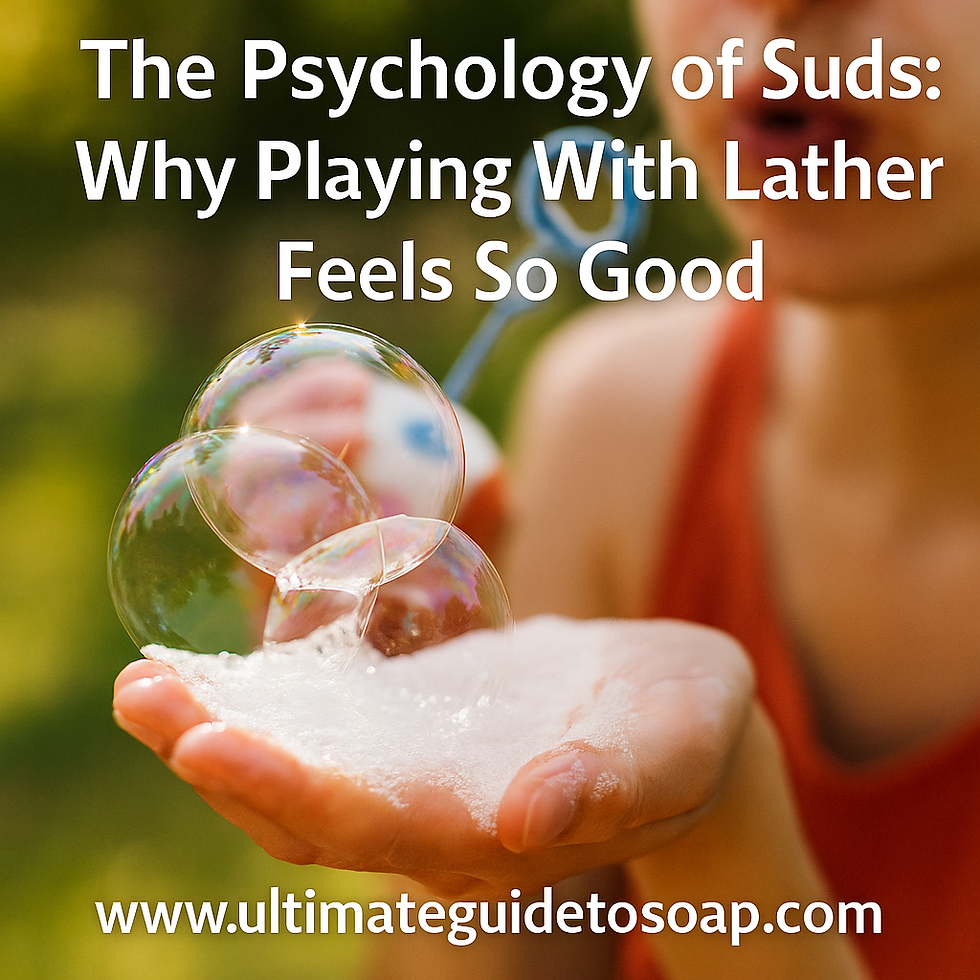Gentle Cocoa Butter 10-Minute Liquid Soap Paste
- Jan 31, 2022
- 3 min read

High Temperature Liquid Soap (HTLS)
The education and experience gained from reading the Ultimate Guide to Hot Process Soap can be applied to all different types of soap making, including Cold Process, Transparent and Liquid Soap Making. In UG2HP, we explore the effects of thermodynamics and mechanical mixing on the saponification process and can apply these principles, in addition to the principles learned about the chemistry of soap making, to quickly and efficiently create a beautiful liquid soap.
Standard liquid soap recipes require 3 steps: creation of the soap paste (1-2 hours), dilution (6-10 hours) and neutralization (1 hour). That is a LOT of time, work and energy spent on making one batch of soap. With the principles of soap science learned in UG2HP, we are able to drastically shorten this process. We are able to accelerate the saponification rate by applying the fundamentals of soap science. We create our recipes so that they are high in saturated fatty acids, include emulsion stabilizers, solvents, clarifying agents, a dual-lye solution for rapid emulsification and increased viscosity, and more. We use increased heat for thermal energy and continuous mechanical mixing to increase the number of molecular contacts. All of these things should sound familiar to readers of UG2HP because they are the same principles applied to HTHP and fluid hot process recipes. The same principles that help accelerate the saponification reaction rate in HTHP can easily be applied to accelerate the reaction rate in liquid soap making. We will call the process of making liquid soap with the same principles of HTHP, High Temperature Liquid Soap or HTLS. HTLS only requires two steps. First, we must make our soap. This involves the saponification reaction that occurs when we add our oils to our lye. Second, we must dissolve or dilute the soap in water to create the liquid consistency that we are striving for. With our UG2HP HTLS recipes, we include additional free fats so there is no need to neutralize your solution. There is no need for a 12-hour long process, when amazing liquid soap results can quickly be achieved in a fraction of the time. (It should be noted that you can adapt and adjust your recipe to include a lye excess for increased clarity and shelf-life, but acidification will be necessary.)
The Ultimate Guide to Hot Process Soap team has dedicated themselves to testing and formulating new and exciting HTLS recipes. We can make HTLS recipes as a more solid soap paste or you can learn how to make 30-Minute High Temperature Liquid Soap and skip the paste. Yep, in less than 30 minutes from start to finish, you can make beautiful, ultra-clear and rich-lathering liquid soap. The recipe below creates a liquid soap paste that can be saved for later use or diluted after the cook. For our 30-Minute liquid soap recipes, be sure to check out The Ultimate Guide to Liquid Soap for a complete instructional video tutorials, brand new recipes, and a complete liquid soap making course that you can take anywhere in the world. Never spend more than 30 minutes making liquid soap again!
Part one: Saponification- Creating a Liquid Soap Paste
The video below shows the first part of the HTLS process- the saponification reaction and creation of a liquid soap paste. It provides you with an example of how UG2HP readers can use the knowledge and education learned from reading The Ultimate Guide to Hot Process Soap to quickly and efficiently create a beautiful liquid soap paste. Our Gentle Cocoa Butter Recipe creates a very bubbly, but skin smoothing and softening recipe. This recipe is perfect for hand soap or for body wash. If left unscented, it will have maintain a subtle and sweet cocoa butter smell.
Note: If using HTHP, you must be prepared for a large volume thermal expansion. Your heating container needs to be at least 3 times the volume of the total recipe.
Part Two: Dilution- Creating a Soap and Water Solution
The second half of the HTLS is the thermal dilution stage. You will place your soap paste into a heated container, such as a crockpot or pot on the stove, with hot water in order to create the liquid consistency that you desire. I recommend starting this recipe with a 30% soap concentration and slowly adding more water until there is no remaining undiluted soap and you have reached your desired soap concentration.
Recipe:


Now available- The Ultimate Guide to Liquid Soap: Soap Science, Recipe Formulating, Cold Process Liquid Soap, Hot Process Liquid Soap and our 30-Minute Liquid Soap Process. We make liquid soap EASY. Get your copy today by visiting our today!
Happy Soaping!





Comments